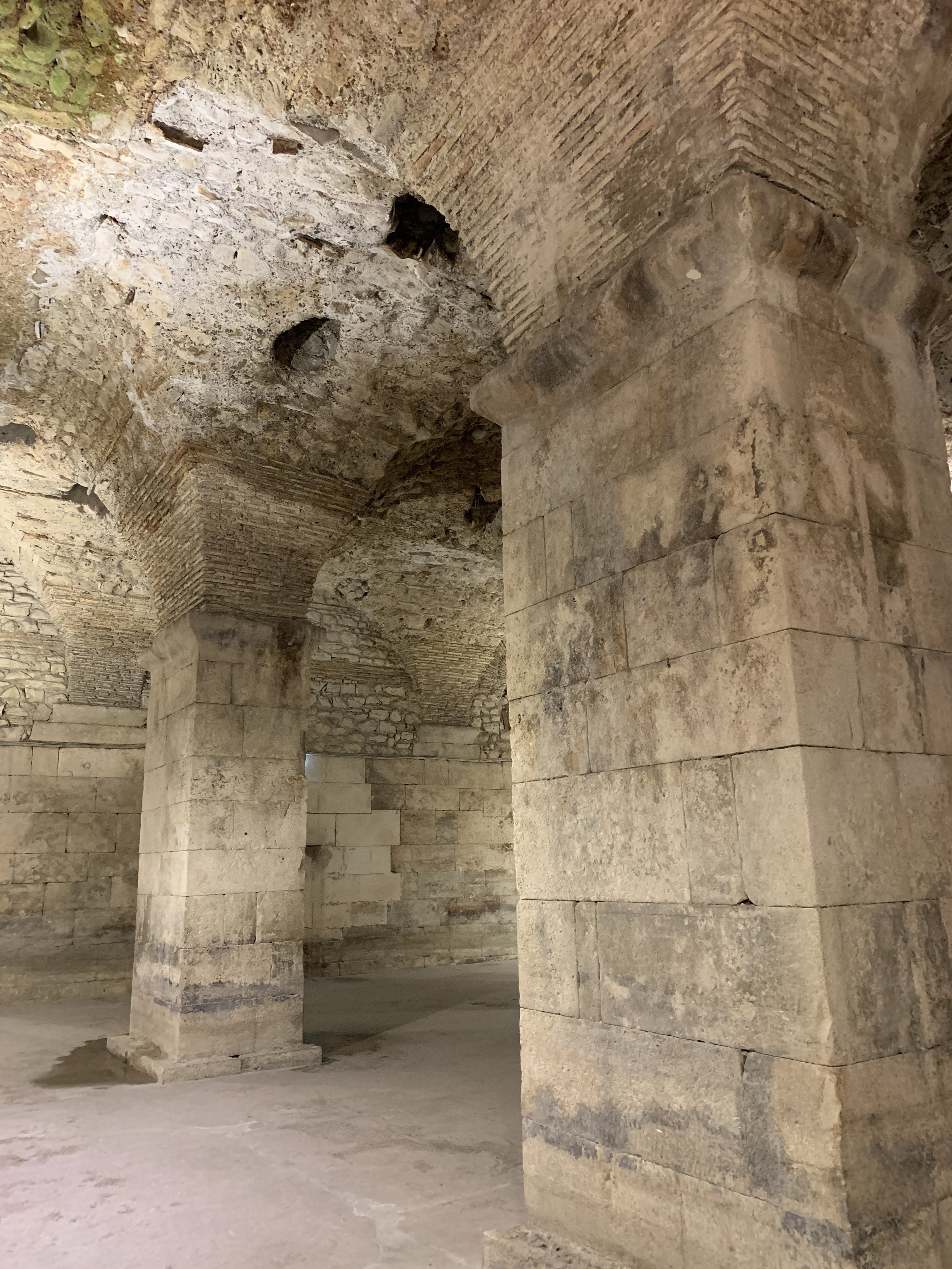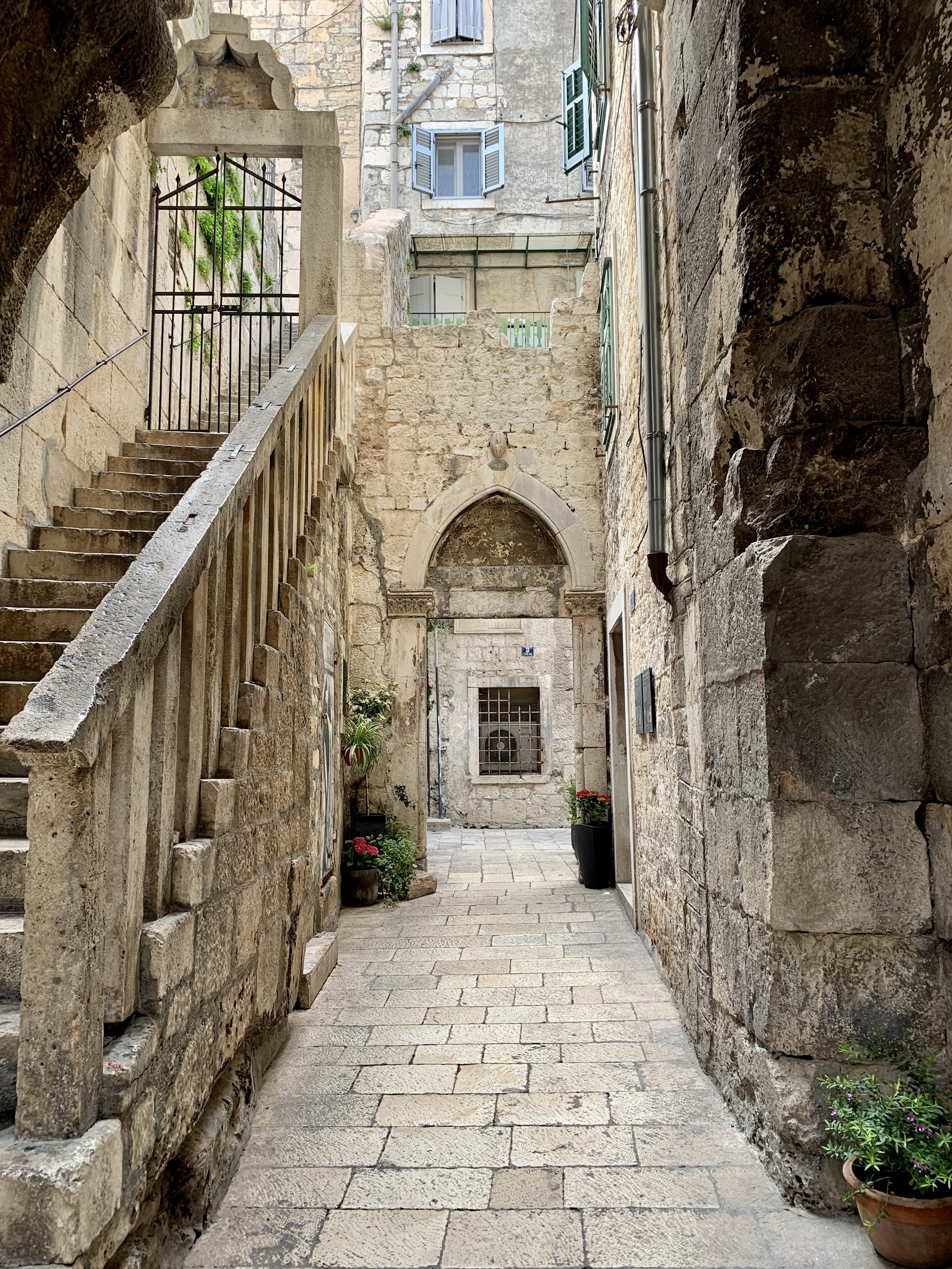Split, Croatia
We sail into the port of Split and explore the ancient city, including the palace of Roman Emperor Diocletian — who was born close by — and his extensive cellars. We also get a good look at a variety of streets, sights, and squares across this attractive Croatian city.
Our ship had crossed the Adriatic overnight to reach the Croatian coastline. We woke to a warm, breezy morning, floating past small boats and hillside villages towards the city of Split.
Our ship sidled up to a dock to give us our first look at the ancient city, built around the massive palace of Roman Emperor Diocletian. But what dominated our view was the city’s Riva waterfront promenade, lined with palm trees and bustling cafes.
Despite evidence of Split’s origins in the 6th century BC, the city is generally considered to be about 1,700 years old. The well-preserved palace remains have been nicely assimilated into the modern city, with old walls merging into new and back again, and the emperor’s mausoleum now serving as a cathedral.
Marianne and I took advantage of some free time in the morning to take a quick look at Split. But after a 20-minute walk in the warming sun — past two docks providing ferry service to Croatian islands and passage to Italy, past the surprisingly busy train station, with beluggaged passengers rolling into town — we arrived in Split a bit spent.
There seemed to be an awful lot of people about. We soon learned that Croatian soccer powerhouse Dinamo Zagreb would be facing local favorites Hadjuk Split that night in a clash of the nation’s top two clubs. The streets were filled with fans of both teams, sporting their colors, singing their songs, jeering at their opponents. By late afternoon, the 14th century People’s Square (below, shown in morning) was littered with crushed beer cans.
The Palace Cellars
That afternoon, I joined a tour of Diocletian’s Palace, the fortress-palace retirement home of the Roman emperor Diocletian after his abdication in 305 AD. Born to a family of relatively low status near modern-day Split in the Roman province of Dalmatia, Diocletian rose through the ranks of the military, eventually becoming commander of the cavalry under Emperor Carus. When both Carus and his son died during a campaign in Persia, the troops proclaimed Diocletian the new emperor.
Diocletian is credited with saving the Roman Empire, which was under threat from every direction. He defeated the Sarmartians, the Carpi, the Alamanni, and the usurpers in Egypt. Finally, in 299 AD, Roman troops sacked the capital of their traditional enemy, Persia. But Diocletian recognized that the huge empire could not hold under the will of a single man, so he promoted Maximian to co-emperor in 286 AD to look after the western empire while Diocletian managed the east. He then shared power further by appointing leaders to junior roles under the two emperors, creating a Tetrarchy (“rule of four”) in which each was responsible for one-quarter of the empire.
My tour began in the Palace Cellars, located at the southern end of the complex beneath the emperor’s apartments. The collection of passageways, storage facilities, and a chapel is considered to be one of the best-preserved ancient substructure complexes in the world.
Diocletian’s Palace
We surfaced near the Romanesque bell tower of Saint Domnius Cathedral, built in 305 AD and dedicated to the city's patron saint. Mosaics lined the walkways as we moved on through a variety of excavated viewpoints.
Our tour filed through a narrow passageway and spilled out onto Peristil Square, a regal gathering spot at the center of the fortress, used in ceremonies for the emperor.
Streets of Split
We continued on through the attractive, narrow walkways within the palace walls.
We eventually arrived at the Golden Gate, a 4th-century Roman stone entryway on the north side of the palace. On the gate’s exterior, archways decorating the façade were once home to stately statues.
Just outside the gate is a 28-foot-tall statue of Gregory of Nin, a Croatian Catholic prelate who was no fan of the pope and who introduced the Croatian language in religious services in 926. The matte-black statue’s massive left toe sticks out like a sore thumb — it’s been worn shiny by tourists who rub it for good luck.
Our final stop was Republic Square, which stands out from the rest of the city architecturally. Built beginning in 1855, the project was driven by Mayor Antonio Bajamonti. Its design reflects the mayor’s resistance to Austro-Hungarian rule and his support for closer relations with Italy.
Shortly before sunset, our boat pulled away from its dock and rejoined the Adriatic Sea.




